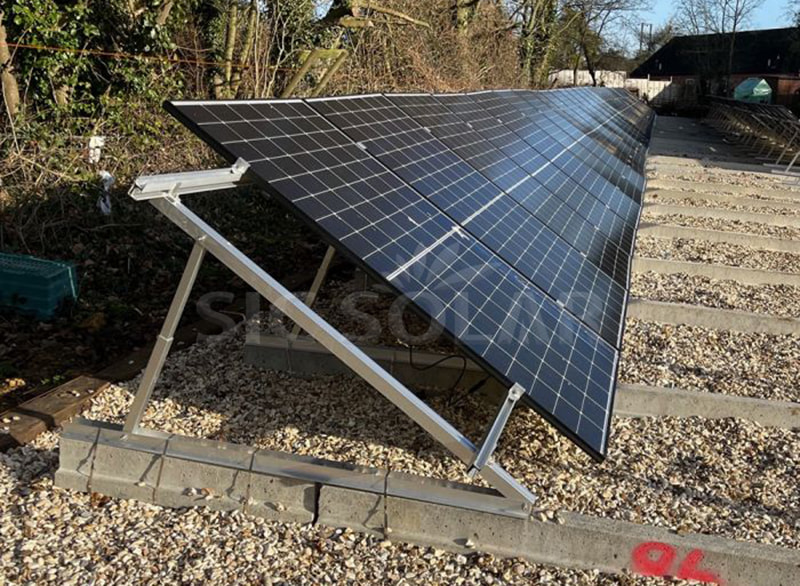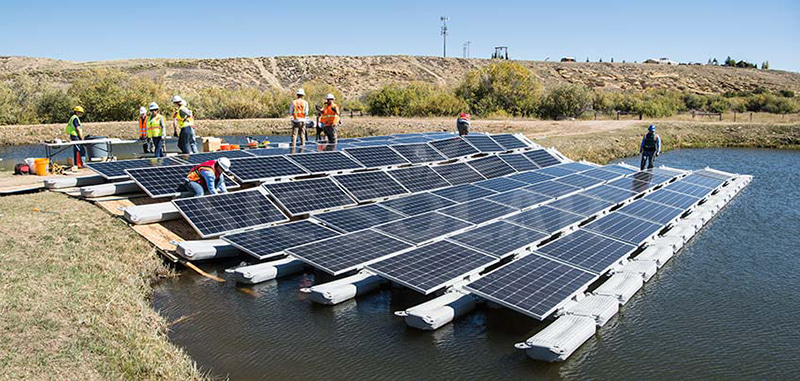The adoption of solar energy continues to expand as new and innovative methods of installation emerge. One such innovation is the floating solar mounting system, which offers a unique solution for utilizing water surfaces, such as lakes, reservoirs, and ponds, for solar energy generation. While the concept of floating solar might seem similar to traditional ground or roof-mounted systems, the installation process for these systems differs significantly. Here’s a breakdown of how the installation of floating solar mounting systems compares to that of traditional ground or roof mounts.
1. Site Assessment and Preparation
Traditional Ground and Roof Mounts: For ground-mounted systems, site assessment involves evaluating the terrain, soil conditions, and shading. Roof-mounted systems require an inspection of the roof’s structural integrity, angle, and exposure to sunlight. Preparation may include clearing vegetation for ground mounts or ensuring the roof can support the weight of the solar panels.

Floating Solar Systems: In contrast, floating solar installations require a thorough assessment of the water body, including its depth, water level fluctuations, and surface area. The site preparation phase involves evaluating the water quality, ensuring the area is free of debris, and in some cases, installing anchors or mooring systems to keep the floating structure stable. Understanding the local climate, especially wind and wave conditions, is also crucial in the design and preparation process.

2. Mounting Structure Design and Materials
Traditional Ground and Roof Mounts: Ground and roof-mounted systems typically use aluminum or steel frames, which are anchored to the ground or attached to the roof. The materials are selected based on durability, weight, and corrosion resistance.
Floating Solar Systems: Floating solar systems use specially designed pontoons or floats made of durable, UV-resistant, and buoyant materials like high-density polyethylene (HDPE). These floats support the solar panels and other components on the water’s surface. The design of the floating structure must account for the potential movement of the water, requiring flexibility and stability in the mounting system. Companies like SIC Solar provide customized floating mounting solutions that ensure durability and stability in various water environments.
3. Installation Process
Traditional Ground and Roof Mounts: The installation of ground-mounted systems involves driving piles into the ground or building concrete foundations to support the racking system. Roof-mounted installations require careful placement and securing of the mounting brackets to ensure they can withstand environmental forces without compromising the roof’s integrity. Both methods typically involve a straightforward assembly of the racking system, followed by the attachment of solar panels.
Floating Solar Systems: The installation process for floating solar systems is more complex due to the aquatic environment. After the floats are assembled and connected, they are deployed onto the water surface, often in sections, and then linked together. Anchors or mooring lines are used to secure the system in place, preventing it from drifting. The solar panels are then mounted onto the floats, and the electrical connections are made using waterproof cables and connectors. This process requires specialized equipment and expertise, as working on water presents additional challenges compared to land-based installations.
4. Maintenance Considerations
Traditional Ground and Roof Mounts: Maintenance for traditional systems generally involves cleaning panels, inspecting mounts, and ensuring electrical connections remain intact. Access to these systems is typically straightforward, whether on the ground or a roof.
Floating Solar Systems: Maintenance for floating solar systems is more complex due to their location on water. Regular inspections must account for the effects of moisture, potential biofouling (growth of algae and other organisms), and the stability of the floating structure. Accessing the panels may require boats or floating platforms, and specialized cleaning techniques may be necessary to remove debris or organic growth from the panels and floats.
5. Environmental Impact
Traditional Ground and Roof Mounts: Ground-mounted systems may involve land clearing, which can impact local ecosystems. Roof-mounted systems have minimal environmental impact but are limited by available roof space.
Floating Solar Systems: Floating solar installations can have both positive and negative environmental impacts. On the positive side, they reduce evaporation from water bodies and can prevent algae growth by shading the water. However, they may also disrupt aquatic ecosystems if not carefully designed and monitored. Floating solar systems from companies like SIC Solar are engineered to minimize environmental impact, offering eco-friendly solutions that harness the potential of water surfaces without harming local wildlife.
The installation process for floating solar mounting systems presents unique challenges and considerations compared to traditional ground or roof-mounted systems. From site assessment and preparation to the design of the mounting structure and ongoing maintenance, every step requires careful planning and specialized expertise. As floating solar continues to gain traction, companies like SIC Solar are leading the way in providing innovative and reliable solutions that make the most of our planet’s water surfaces.
By understanding these differences, solar project developers can better evaluate which type of installation is best suited for their specific needs and environmental conditions. Whether you’re exploring traditional or floating solar, the key is to work with a trusted partner like SIC Solar to ensure a successful and sustainable installation.